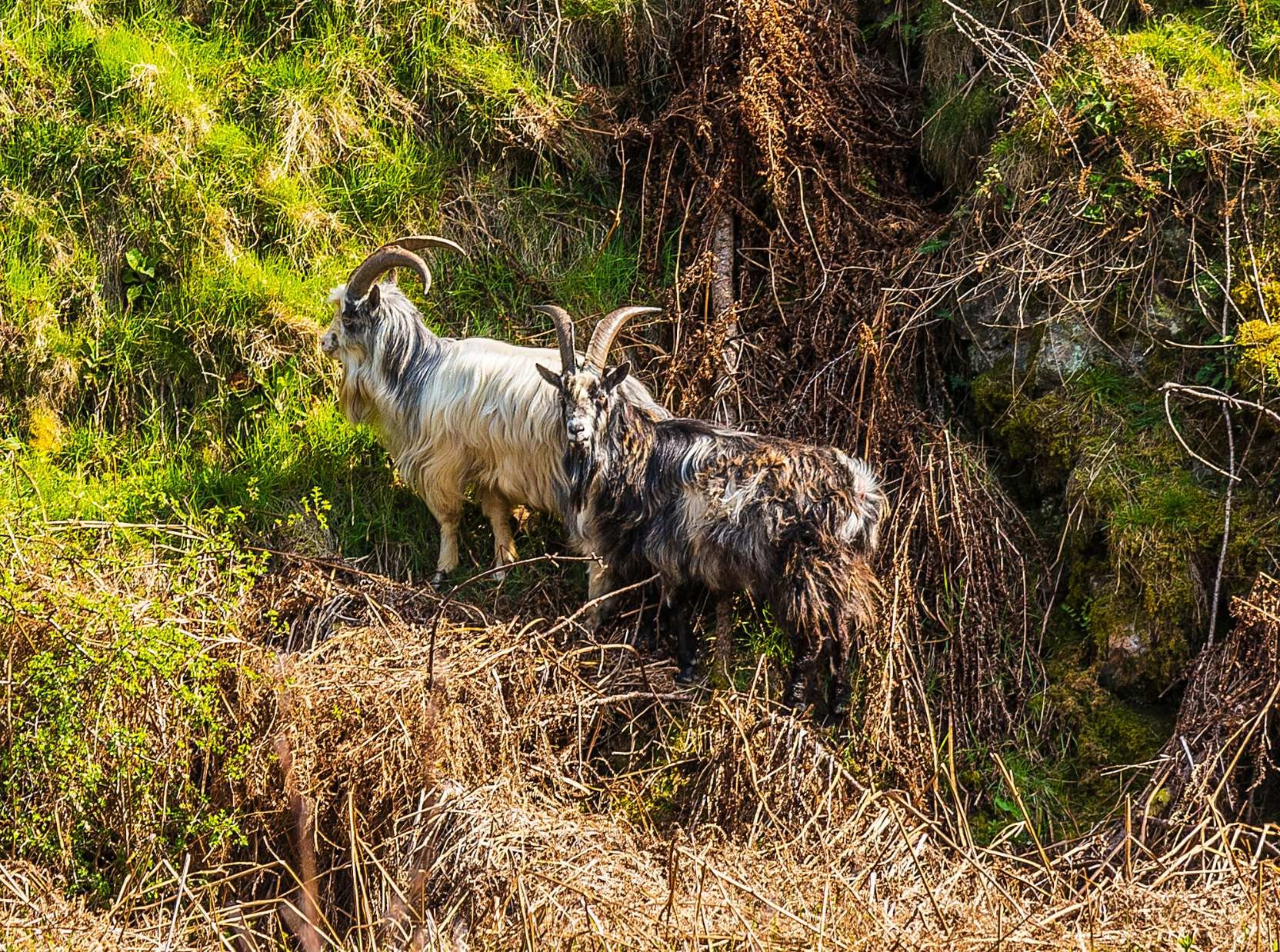
Local Wildlife - College Valley
Hooves, Wings, Whiskers — Life in the Valley
The College Valley is not only a haven of peace and natural beauty — it's also home to an extraordinary range of wildlife. From red squirrels darting through the trees to golden eagles soaring above the Cheviots, the area surrounding Hethpool House offers nature lovers the chance to experience some of the UK’s most iconic (and elusive) species in their natural habitat.
Mammals in the Valley
The woodlands and fields near Hethpool are home to roe deer, badgers, foxes, and stoats, many of which are regularly seen around dawn and dusk. The elusive otter has also been spotted along the College Burn, though patience and luck are needed to catch a glimpse.
A particularly remarkable sight — and a highlight for many visitors — is the Cheviot wild goats. This ancient, hardy breed roams freely across the hillsides, often in small herds. With their shaggy coats and impressive curved horns, they’re a truly unique feature of the landscape and can be seen grazing on steep, remote slopes. These goats are descendants of ancient domestic stock and have lived wild in the Cheviots for centuries.
One of the College Valley’s most treasured residents is the red squirrel. Unlike much of the UK, where they’ve been outcompeted by greys, the red squirrel population here remains active and healthy — often spotted in the woods near Hethpool Linn.
Birdlife and Raptors
The skies above the valley are alive with birdsong and birds of prey. Buzzards and kestrels are commonly seen hovering above the hillsides, while the occasional peregrine falcon or hen harrier may be spotted if you’re lucky. There have even been rare sightings of golden eagles in the wider Cheviot range.
Lower down, the valley is filled with curlews, lapwings, skylarks, and wagtails, especially in spring and summer. Their calls echo across the moors and meadows, adding to the area’s sense of wildness and life.
Insects, Amphibians & More
The valley’s burns and bogs provide the perfect habitat for frogs, toads, and newts, while the meadows are alive in summer with butterflies, bees, and dragonflies. Keep an eye out for adders sunning themselves on rocks in quiet corners — beautiful but shy, and best admired from a safe distance.
Seasonal Highlights
Spring: Lambing season, wildflowers, returning birds
Summer: Butterflies, dragonflies, and longer daylight for spotting raptors and wild goats
Autumn: Deer rutting season, fungi in the woods, and migrating birds
Winter: Silent landscapes with fox and deer prints in the snow
Good to Know
Bring binoculars and a wildlife guidebook if you're keen on spotting or identifying species.
Early morning and late evening are often the best times for wildlife watching.
Keep dogs on a lead, especially during lambing season and ground-nesting bird season (March–July).
Please observe from a distance — many species are sensitive to disturbance.
Wildlife is wild — there are no guarantees, but patience is often rewarded!
